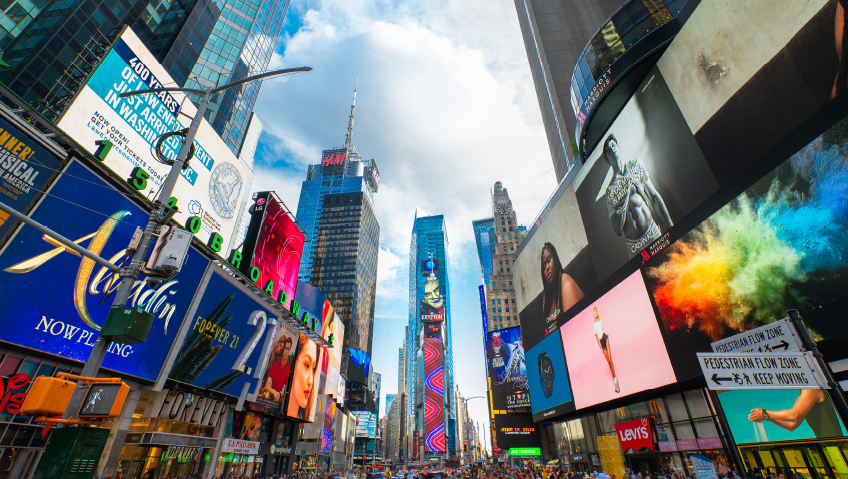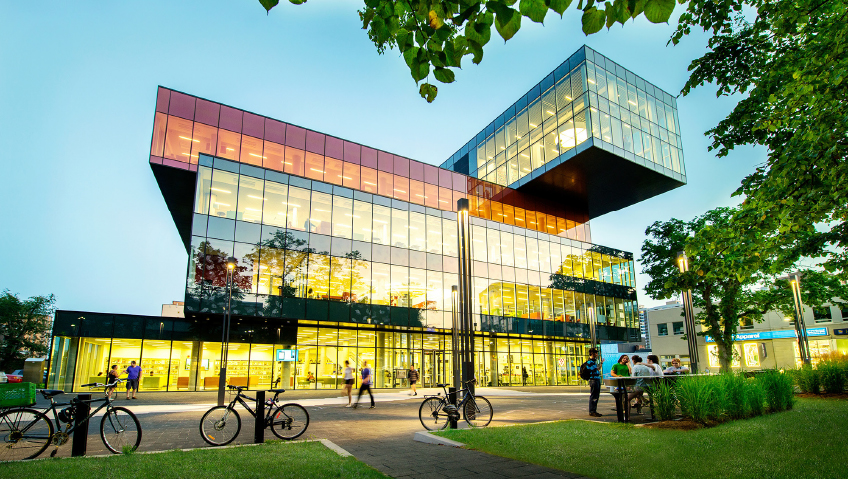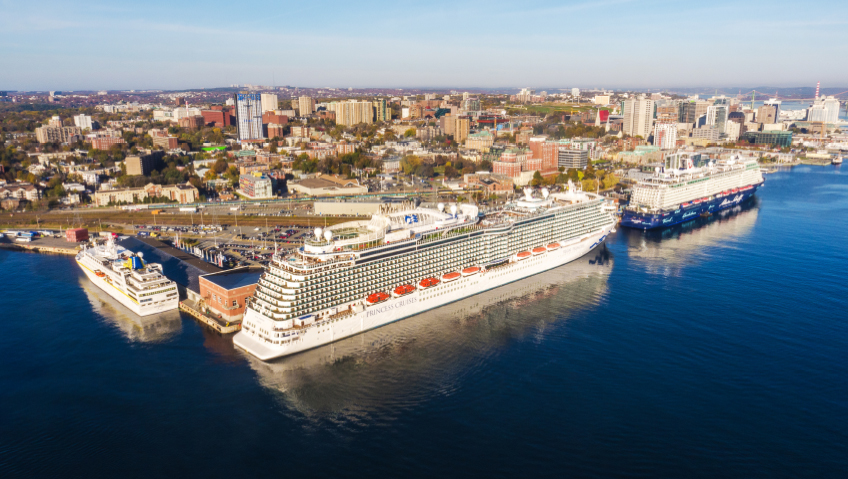From the classroom and the boardroom, to hotel lobbies, sports stadiums, and Times Square, today’s electronic signage is digital art, designed to educate, entertain and excite.
From simple black-and-white garage sale posters stapled to utility poles to massive digital displays in New York’s Times Square bursting with thousands of colors, signs are everywhere. Going back to about 3000 BC and the Ancient Egyptians, and later Romans and Greeks, early outdoor signs often featured symbols or graphics carved in stone, wood, copper or leather to inform the public, some of them illiterate, about the contents of a shop. Later signage showed such things as streets, distance markers, and even cave canem, ‘Beware the Dog,’ as seen on mosaics unearthed at Pompeii.
As time progressed, so did signage, advertising ale houses in the Middle Ages. Unlike earlier unadorned versions, many signs became large and elaborate, supported by posts or metal brackets, which led to regulations in England and France restricting their size. Some, deemed a nuisance, were removed from streets and attached to building exteriors, resulting in the first wall signs advertising everything from inns to doctors, and coffee houses to bordellos.
The circus comes to town
Remaining relatively the same for centuries, outdoor advertising changed forever in 1835. That year, a man named Jared Bell created big, colourful posters advertising circuses coming to town. Not to be outdone, P. T. Barnum – American showman, entrepreneur, and founder of the Barnum & Bailey Circus – capitalized on this revolutionary new form of advertising. Instead of freestanding or wall-mounted signs of the past, this new generation of signage soon grew into massive billboards measuring 50 feet (15 metres) across.
Soon, these enormous posters were popping up across America, promoting everything from traveling shows to soft drinks and dish soap. One of the first companies to market itself through billboards was breakfast cereal giant Kellogg, manufacturer of Corn Flakes and many other products. Initially advertising in magazines such as Ladies Home Journal for $4,000 – and experiencing skyrocketing sales as a result – the company’s advertising budget ballooned to $1 million. In 1911, Kellogg’s erected an enormous electric sign in New York’s Times Square. The world’s largest electric sign at the time, it featured a 66-foot (20 m) ‘K’ in Kellogg.
Immersive and exciting
Where signs of the past were mainly meant to be read and provide basic information, today’s stunning displays are something to be experienced, especially in world-famous locations like the Las Vegas Strip and Times Square. From modest-sized electronic signs in hotels and convention centers welcoming guests to so-called “mega-spectaculars,” the world of displays has gone digital. Extending far beyond tourist areas, today’s digital LED displays are found everywhere, from classrooms and boardrooms to shopping malls and sports stadiums, all of them competing for attention.
Behind many of the world’s electronic components including lithium-ion batteries, camera modules, image sensors, and displays, Samsung recently unveiled one of its most remarkable products to date: The Infinity Screen. A revolutionary new, center-hung videoboard 122 feet (37 m) above the playing field, The Infinity Screen – at Los Angeles’ Sofi Stadium – was showcased at Super Bowl LVI. Owing to its unique oval shape, the display is actually wider than the playing field.
At 70,000 square feet, The Infinity Screen is the biggest sports videoboard ever created. It is dual-sided, allowing fans to experience games in a whole new way, and displays everything from 4K (horizontal display resolution of 4,000 pixels) instant replays to statistics, interactive updates, up-close action, and plenty more via about 80 million pixels, allowing for remarkably clear images. Its unique size and shape make it wider than the field of play, and allow for spectacular viewing angles.
Just as sound quality has become integral to home theaters, the same is the case with massive electronic displays. More than a feast for the eyes, The Infinity Screen’s frame holds over 260 individual JBL by Harman speakers, the equivalent of 1,500 home theater systems. And with the biggest graphics control system in sports, every one of the screen’s LED panels can be “uniquely or congruently programmed with statistics, live and animated,” according to the Samsung Newsroom. “By using the measurements from architectural drawings of the stadium and simulating viewing angles on a test screen, Samsung designed The Infinity Screen to ensure that every seat in the stadium offers a great view of the videoboard.”
Samsung outfitted the Sofi Stadium with other innovative and immersive display and audio solutions, including 2,600 large format ribbon board displays, which are thin, long, LED balcony-mounted screens.
Digital art
As remarkable as The Infinity Screen is, it is far from Samsung’s first foray into remarkable, larger-than-life public displays. Famous for decades for its many massive billboards advertising everything from fast food to designer fashions and movies to musicals, Times Square was also the home to Waterfall-NYC last year. A massive LED digital waterfall, the art installation was created in partnership with d’strict in the heart of New York’s famous gathering place.
Visitors and locals alike were treated to a hyper-realistic display of waves and waterfalls over 300 feet (about 100 m) tall. For Samsung, Waterfall-NYC represents a bold step for the company as it embraces the world of digital art. Known as ‘the great white way’ for its millions and millions of billboard lights, the remarkable Times Square display served as an electronic oasis and a collaboration between d’strict – which integrates content and digital media to create unique spatial experiences – and South Korea’s Samsung.
“I am really excited to partner with d’strict to showcase their amazing visual creativity via the power of our unique displays,” stated Harry Patz, Senior Vice President and General Manager of Samsung’s Display Division in a media release. “The cascading waterfall takes advantage of our vertical signage offering, which incorporates three screens at the bottom connected to one at the top to provide an immersive and compelling visual experience. The display has the highest peak brightness (9000 nits) of any in the industry, allowing visitors to enjoy vivid artwork even in bright daylight.”
While many of us take signs for granted, electronics companies are taking displays to never-before-seen levels where we are made to feel like we are walking through rainforests or on the gridiron, catching the football in mid-air and furiously racing toward the end zone for a touchdown. And while old-school paper posters will always have their place, expect to experience more immersive electronic displays complete with stadium-quality sound in the future.






